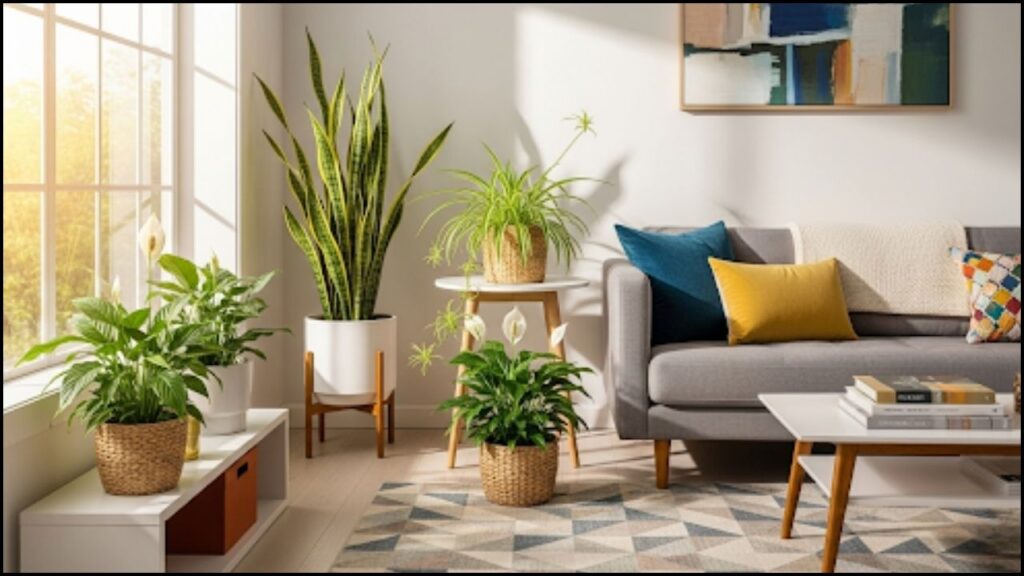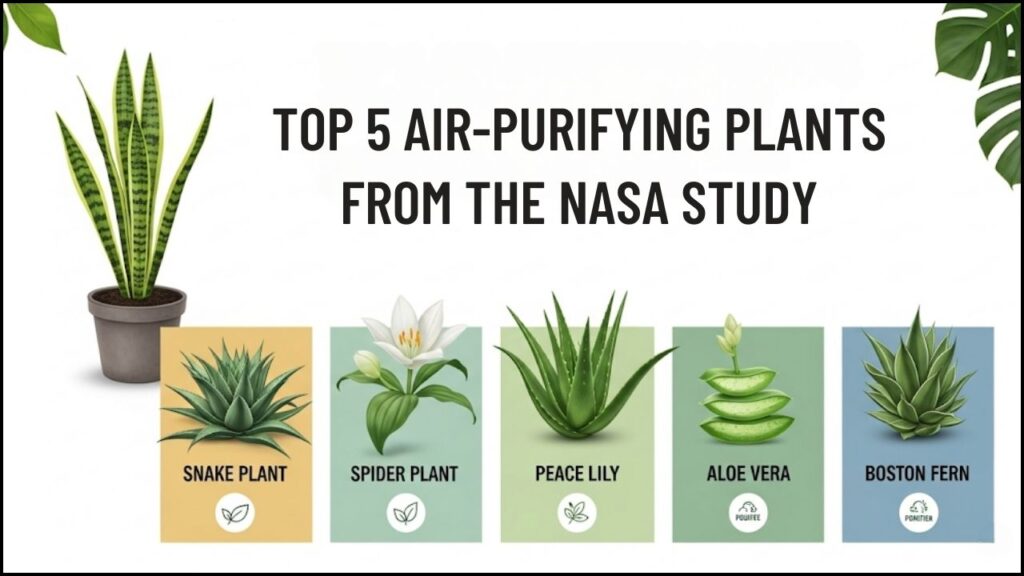
Amid growing concerns over indoor pollution, homeowners and wellness experts are increasingly turning to nature for a solution. While the idea that houseplants can improve air quality has been popular for decades, the science points to a more nuanced reality. This article examines the research, including a foundational NASA study, to identify the best plants for boosting oxygen and filtering airborne toxins, and clarifies the actual impact they can have on a home environment.
The Science of Greener Air
The conversation around houseplants and air purification gained significant momentum with the 1989 NASA Clean Air Study. The research, led by Dr. B.C. Wolverton, was designed to investigate ways to clean the air in space stations. The study concluded that certain common houseplants could be effective at removing volatile organic compounds (VOCs) like benzene, formaldehyde, and trichloroethylene from sealed environments.
“Plants, along with the microorganisms in the potting soil, were shown to be a promising, energy-efficient solution for indoor air pollution,” the NASA report stated. This research established a list of highly effective plants, which remains influential today.
However, subsequent research has added important context. While plants do absorb VOCs and release oxygen through photosynthesis, the real-world impact in a typical home is less dramatic than in a sealed lab chamber. “You would need a very high density of plants—something like 10 plants per square meter—to see a significant reduction in VOCs in a standard room,” said Dr. Michael Waring, an environmental engineer at Drexel University, in an interview with National Geographic.
Despite the need for a large quantity of plants to match the efficiency of modern air purifiers, experts agree they contribute positively to indoor air quality. They can increase humidity, which helps with respiratory comfort, and studies have shown their presence can reduce stress and improve concentration, contributing to overall houseplants for health benefits.

Top Recommendations for Cleaner Indoor Air
While no single plant can completely purify a room, several species have demonstrated superior capabilities in laboratory settings. These plants are often recommended by horticulturists not only for their air-cleaning properties but also for their resilience and ease of care.
The Most Effective Air-Purifying Plants
Based on the NASA Clean Air Study and subsequent horticultural advice, the following plants are consistently ranked as top performers:
- Snake Plant (Sansevieria trifasciata): Often called “mother-in-law’s tongue,” this hardy succulent is notable for its ability to perform a type of photosynthesis called Crassulacean Acid Metabolism (CAM). Unlike most plants, it releases oxygen at night, making it an excellent choice for bedrooms. It is effective at filtering formaldehyde, xylene, benzene, toluene, and trichloroethylene.
- Spider Plant (Chlorophytum comosum): This popular and easy-to-propagate plant is a powerhouse for removing formaldehyde and xylene. According to a report from the University of Georgia Cooperative Extension, its arching leaves and rapid growth make it an efficient air cleaner.
- Peace Lily (Spathiphyllum ‘Mauna Loa’): With its elegant white blooms, the Peace Lily is more than just decorative. It boasts one of the highest transpiration rates, meaning it’s excellent at releasing moisture into the air. It also effectively removes ammonia, benzene, formaldehyde, and trichloroethylene.
- Areca Palm (Dypsis lutescens): This plant is often cited as one of the most efficient air-humidifying plants. The Royal Horticultural Society notes its effectiveness in clearing xylene and toluene from the air. Its feathery fronds can grow quite large, allowing it to process more air than smaller plants.
Realistic Expectations and Best Practices
To maximize the benefits of houseplants, placement and density are key. Experts at Texas A&M AgriLife Extension suggest placing plants in areas where you spend the most time, such as the bedroom or home office. For a tangible effect on air quality, they recommend having at least two good-sized plants per 100 square feet.
It’s also important to remember that the primary role of plants is biological. They require proper care to thrive and effectively perform their air-purifying functions. “A healthy, thriving plant will always be more effective than a stressed or sickly one,” explained a horticulturalist in a publication from the University of Florida’s Institute of Food and Agricultural Sciences. Regular watering, appropriate light, and healthy soil are crucial.
While houseplants are a valuable component of creating a healthier indoor environment, they should be seen as a supplement, not a replacement, for proper ventilation and modern air filtration systems, especially for individuals with allergies or respiratory conditions. Opening windows regularly remains one of the most effective ways to reduce concentrations of indoor pollutants.
The appeal of using plants to create a healthier home is undeniable. While they may not be a silver bullet for air pollution, their proven ability to filter certain toxins, coupled with their psychological benefits, makes them a worthwhile and natural addition to any indoor space. As research continues, the focus may shift toward understanding the complex interactions between plants, soil microbes, and the indoor microbiome.
Plant Stylists Reveal the Best Houseplants for Office Environments
